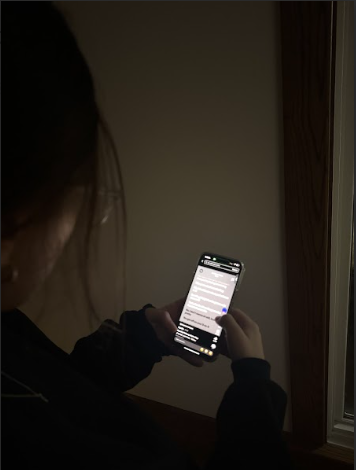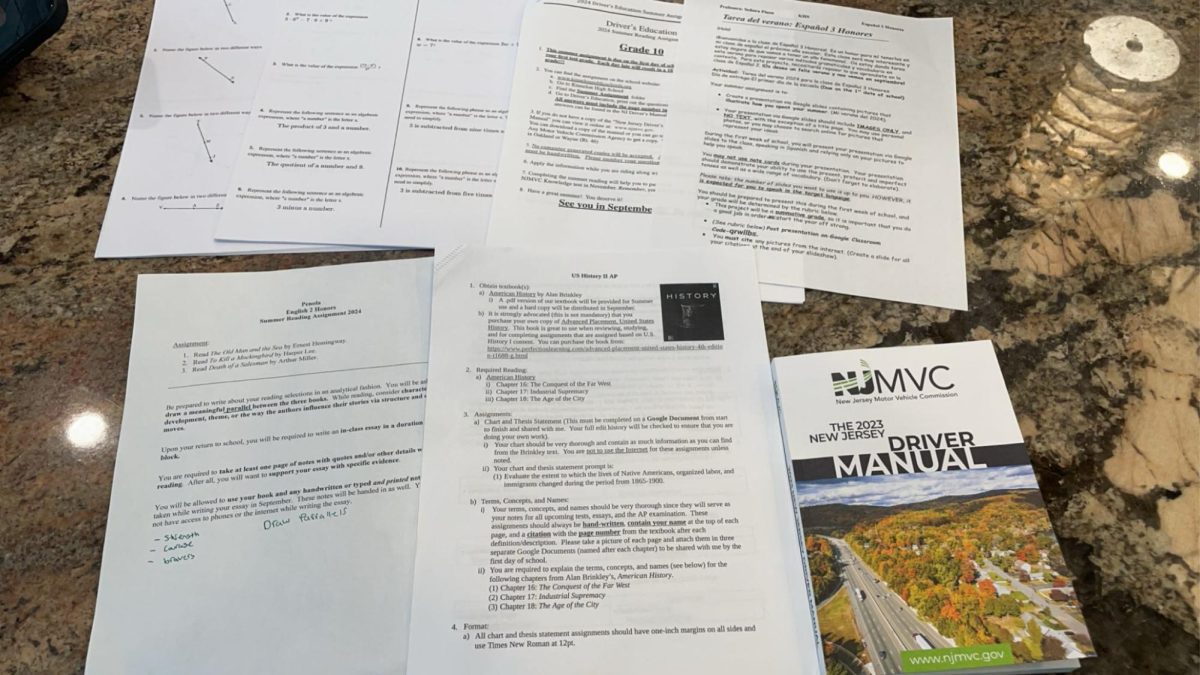The scent of sunscreen and the voices of families fill the beach air. You recline on your beach chair and sip your exorbitantly priced smoothie. The sun is beaming down on your face, summer has just started, and life is good.
Summer is closing in, and it is a time when drinks get colder, the weather gets warmer, and skin gets darker. A staple summer activity is sunbathing or tanning, with 33.7% of US adults participating.
Tanning is also popular among younger generations, with some tanning as often as “three times a week to almost every day”, according to freshmen Eva Rosenfeld and Charlotte Barbach.
Tanning occurs when UV rays from the sun hit the skin and produce melanin, which causes the skin to turn darker. It is possible to tan in UV indexes of three and up, the ideal range being five to eight. Those looking to tan should sit outside between 10 a.m. and 4 p.m. when the UV is at its highest. Although tanning is usually done during sunny days, it is still possible to tan when it is cloudy because around 90% of UV rays penetrate clouds and reach your skin.
Tanning may look like a passive activity, but numerous steps can be taken to get the most out of a tanning day.
Every sunbather has their tanning routine, “I put on a layer of sunscreen, put [on] tan oil, I reapply both after two hours, and then I go in the water,” says Barbach, who frequently tans in the summer.
Some products that can deepen a tan or speed up the process are tanning lotion or oil. Although both products achieve similar results, tanning oils provide a quicker and darker tan, by stimulating the body to produce more melanin. In contrast, tanning lotions provide the skin with [more sun] protection while tanning.
Some tanning products that Barbach uses are Hawaiian Tropic SPF 30, Hawaiian Tropic Dark Tanning Oil, Maui Babe Browning Lotion, and Australia Gold Instant Bronzer with SPF 15. These products can be bought from retailers like Amazon, Target, or Ulta.
It is important to note that while most tanning products have SPF, it is still possible to get sunburned using only tanning oil or lotion. Sunscreen should always be applied before tanning oil or lotion is distributed evenly over the body.
However, tanning can have serious side effects if proper precautions are not followed. Overexposure to UV rays can cause serious sunburns with painful side effects.

Harmful UV rays can also cause skin cancer, the most common type of cancer in the US. A higher risk of skin cancer can run in families, and people with lighter skin are more likely to get it. While some kinds of skin cancer aren’t deadly, like basal cell carcinoma, melanoma is a type of life-threatening skin cancer.
“Melanoma can spread throughout the body [and organs], which is much more dangerous”, said science teacher Nicholas Gebhardt.
A way to avoid contracting skin cancer or painful sunburns is to tan in moderation, never to the point of sunburn. Another way is to always apply sunscreen, even when using tanning oil or lotion. Sunscreen should be applied all year round, as UV rays can hit the skin even when there is no sun.
Applying sunscreen with high SPF (Sun Protection Factor) can protect the skin from harmful UV rays. However, it is still possible to tan with sunscreen since no amount of SPF can fully protect skin from UV rays, a good and bad thing depending on the point of view.









